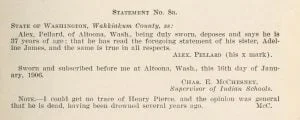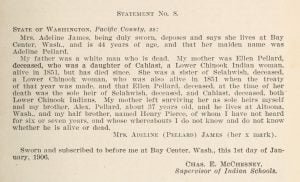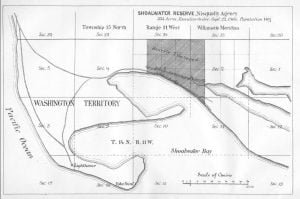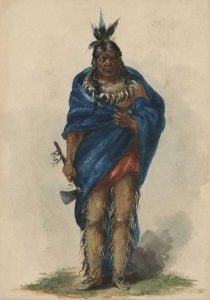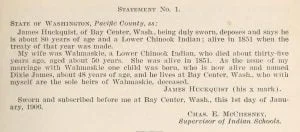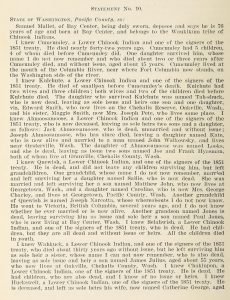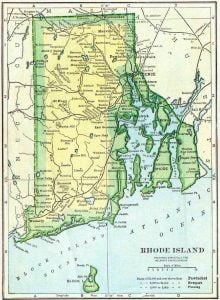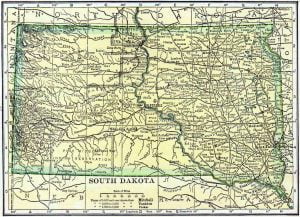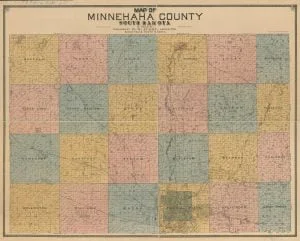Statement No. 7 – Dixie James
This document is a communication from the acting commissioner of Indian Affairs, detailing the rolls of certain Indian Tribes in Oregon and Washington in reference to an agreement from August 1851. It contains statement No. 7 from Dixie James of Bay Center, a member of the Lower Chinook Indians, provided to Charles E. McChesney, supervisor of Indian schools, in 1906. This statement is part of the McChesney Rolls, identifying and recognizing enrolled Chinook individuals separately from any reservations. Published as House Document No. 133, 59th Congress, 2nd Session, Dixie’s sworn testimony records his age, heritage, and familial connections, including his parentage.


